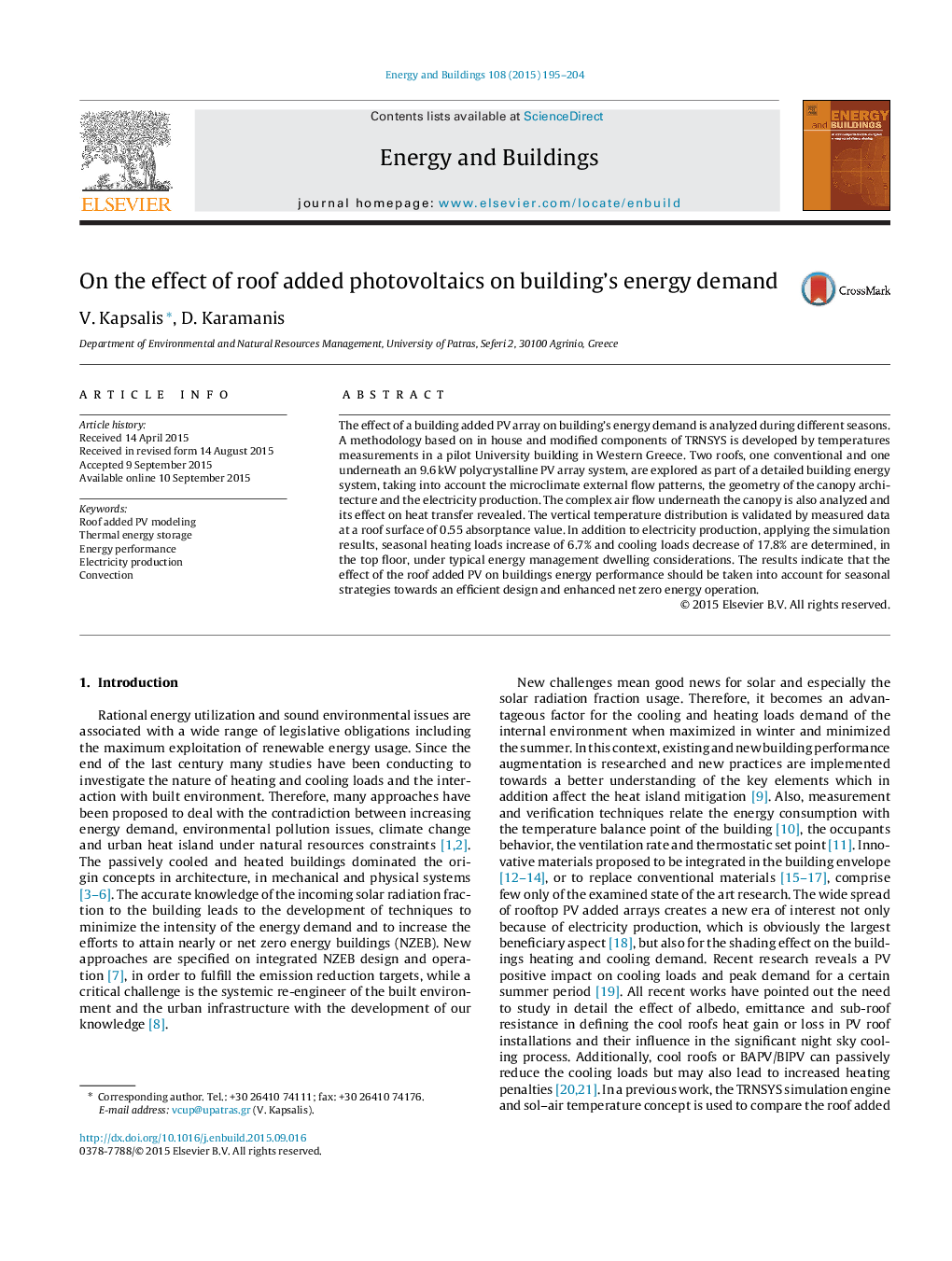| Article ID | Journal | Published Year | Pages | File Type |
|---|---|---|---|---|
| 6731039 | Energy and Buildings | 2015 | 10 Pages |
Abstract
The effect of a building added PV array on building's energy demand is analyzed during different seasons. A methodology based on in house and modified components of TRNSYS is developed by temperatures measurements in a pilot University building in Western Greece. Two roofs, one conventional and one underneath an 9.6Â kW polycrystalline PV array system, are explored as part of a detailed building energy system, taking into account the microclimate external flow patterns, the geometry of the canopy architecture and the electricity production. The complex air flow underneath the canopy is also analyzed and its effect on heat transfer revealed. The vertical temperature distribution is validated by measured data at a roof surface of 0.55 absorptance value. In addition to electricity production, applying the simulation results, seasonal heating loads increase of 6.7% and cooling loads decrease of 17.8% are determined, in the top floor, under typical energy management dwelling considerations. The results indicate that the effect of the roof added PV on buildings energy performance should be taken into account for seasonal strategies towards an efficient design and enhanced net zero energy operation.
Related Topics
Physical Sciences and Engineering
Energy
Renewable Energy, Sustainability and the Environment
Authors
V. Kapsalis, D. Karamanis,
